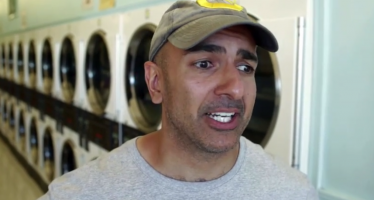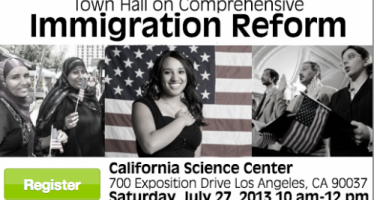Dems Will Reward Union Friends
OCT. 29, 2010
.
Demonstrative of just how raunchy and fierce politics have gotten in America, just last week President Barack Obama told a group of Latino voters, “We’re gonna punish our enemies and we’re gonna reward our friends who stand with is on issues that are important to us.” He wasn’t calling dangerous terrorists enemies; he was talking about people like me — anyone who dares to disagree with the Democratic positions on immigration, taxes, health care, stimulus and the growing public entitlements.
The punishment this election for anyone not in a labor union will be electing more Democrats.
California has a population of 36 million. Of the population, only approximately 2.5 million are union members. As for voters, there are 23.5 million eligible adult voters in California, but only 17 million are registered to vote. Of those, 44.5 percent are Democrats, 30.8 percent are Republicans, 20.2 percent are decline-to-state or independents and 4.5 percent associate with “other parties.” And interestingly, according to the Public Policy Institute of California, the number of registered voters in California has grown by 1.3 million since June 2006.
Even with declining union membership, California will elect pro-union Democratic politicians up and down the state this election.
In 1968, the California Legislature passed the Meyers-Milias-Brown Act, extending collective bargaining rights to local government workers. Teachers and other state employees were granted collective bargaining rights in the 1970s.
Today, the California Teachers Association has 340,000 members. The Service Employees International Union represents 700,000 California workers. Of those, 350,000 are miscellaneous government employees, 2,000 are doctors at state-run hospitals, and the remaining are government workers at the local, county and state levels.
To understand how unions in the state influence elections, a look at the CTA offers an excellent explanation. Passage of Proposition 98 in 1988 created a mandatory funding source for public schools in the state, of more than $450 million a year in new funding, and much of it discretionary.
After Prop. 98 passed, the union-backed school boards used the bonanza of cash to beef up teachers’ salaries, making California’s teachers some of the country’s highest-paid in the country, even though the state’s total spending per student is only slightly higher than the national average.
And since passage of Prop. 98, the CTA props up union-backed school board candidates around the state, and pays heavily to defeat independent-minded school board candidates.
But what does this influence have on California’s current election?
Described as the beginning of the end, the 1998 gubernatorial election was purchased by unions and delivered to Gray Davis – former chief of staff to Jerry Brown. Unions spent millions of dollars in members’ dues on Davis. The SEIU poured $600,000 into his campaign, the CTA gave $1.2 million, and millions in contributions came from the prison guards, cops and firefighters.
That election also greased the skids to set into motion the re-invigoration of the dwindling political career of Jerry Brown.
After two terms as governor of California (1975-1983), Jerry Brown ran unsuccessfully for president in 1976 and 1980. In 1982 Brown ran for U. S. Senate, and lost. He then retreated to Japan to study Buddhism, and receive healing with Mother Teresa in India.
Brown must have seen a flicker of hope, because by 1989 he had returned to the state and made a successful run for California Democratic Party chairman. Not long after assuming the role, he abandoned party politics to run for president in 1992 – a third time, and lost again.
Brown must have decided to take a few steps back before attempting to run for statewide offices, and ran for Oakland mayor in 1999. He won and served until 2007. Sometime during his second mayoral term, an emboldened Brown decided to run for attorney general, often a stepping stone into the governor’s office.
And, rather coincidentally, after 15 years of “dating,” he married his long-time girlfriend, Anne Gust, in 2005. She immediately set to work as his campaign manager for attorney general. Brown won in 2007.
Put all together, it is evident that Brown had a plan. And it is apparent that others in the Democratic Party had a plan for him as well. And of course the unions had their plan to elect their close ally Brown.
Brown pushed for and approved collective bargaining for state workers when he was governor, and marched with labor leader Cesar Chavez. He signed one of the country’s first agricultural labor relations law, allowing farm workers to unionize.
Why is it that unions are running the state? They control massive amounts of money. And we can all thank Jerry Brown. He is about to be re-paid by the unions that he helped put into power. Unions have poured millions of dollars into his campaign to put him back into the governor’s office – it’s a textbook example of pay to play.
Punish your enemies, and reward your friends. Most of us are about to feel the punishment.
–Katy Grimes
Related Articles
Kashkari draws a media crowd
Neel Kashkari, Gov. Jerry Brown’s Republican challenger, has been playing a long game. That hasn’t been immediately evident from the frenetic
Will immigration reform move forward?
President Obama, during his press conference Thursday, identified three policy areas where he believed Congress — at its most dysfunctional
Some bloggers still concerned about FPPC censorship
Sept. 18, 2012 By John Hrabe California’s chief political watchdog sent the blogosphere into a collective tizzy earlier this year.




